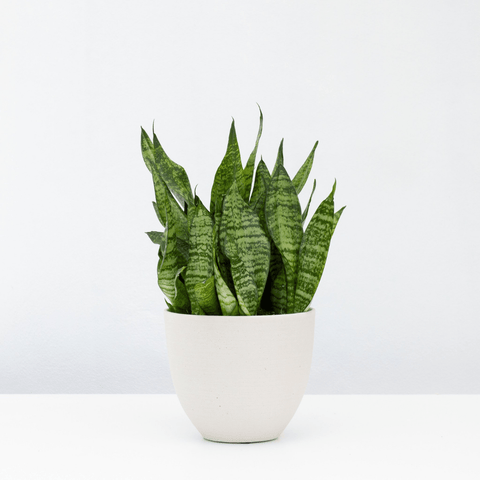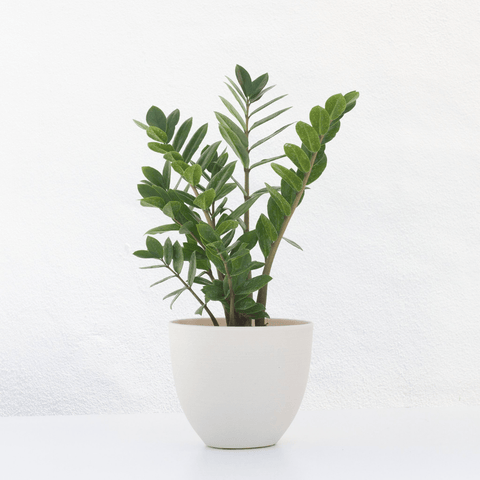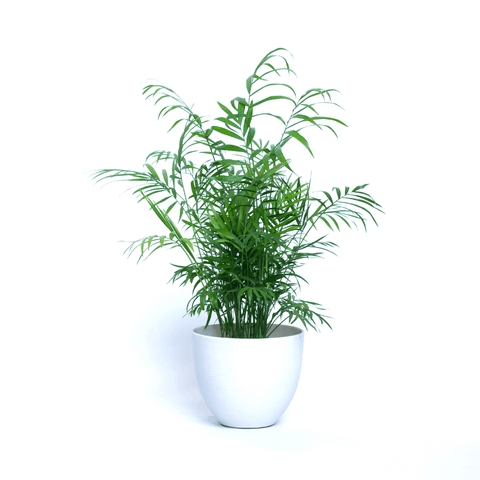The Dracaena Trifasciata, commonly known as the snake plant, is one of the most popular and hardy species of houseplants. There are over 70 different species of the plant. Also known as, a Snake Plant and Mother-in-Law’s Tongue.

The Snake Plant is known for its rough texture and ease of maintenance, requiring only small amounts of water and almost any lighting condition. Also known as, a Snake Plant and Mother-in-Law’s Tongue. Topping NASA's list of air purifying plants, the snake plant comes in a variety of colors, shapes, and heights. The plant is known for its rough texture and ease of maintenance, requiring only small amounts of water and almost any lighting condition.
Sun
Low, medium, or high indirect light, avoid windowsills as they amplify the sun's intensity and create heat that may damage plant.
Water
Water thoroughly every 2-3 weeks. We recommend adding clay drainage balls to the bottom of the pot, however, avoid overwatering.
Pro-Tip
Snake plants top NASA's list of air-purifying plants and come in various colors, shapes, and heights.
Toxicity
Snake Plants are toxic to humans and pets if ingested. Contact your veterinarian in the event that sap, leaves, or any part of plant is ingested.
Basic Plant Care
Recommend transplanting after 2-3 years into a vessel 1-2 inches larger using regular potting mix. Clean plant with damp paper towel every 1-2 weeks to aid photosynthesis and stimulate growth. Check leaves and stalks for pests while cleaning. If pests are found, remove with damp paper towel and use a mild organic pesticide in a spray bottle to coat the affected areas.




